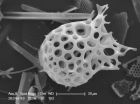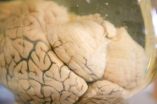(Press-News.org) Monitoring the drug concentration in patients is critical for effective treatment, especially in cases of cancer, heart disease, epilepsy and immunosuppression after organ transplants. However, current methods are expensive, time-consuming, and require dedicated personnel and infrastructure away from the patient. Publishing in Nature Chemical Biology, scientists at EPFL introduce novel light-emitting sensor proteins that can quickly and simply show how much drug is in a patient's bloodstream by changing the color of their light. The method is so simple that it could be used by patients themselves.
Effective drug treatment relies on balancing the efficiency and toxicity of the drug, which lies at the core of personalized medicine. But as each patient differs from another, this requires constant monitoring in order to best customize drug dosage and prevent side-effects or even poisoning. Current drug-monitoring methods rely on techniques that require specialized personnel and expensive devices, and have to be carried out in diagnostic labs away from the patient's point-of-care. Developing quick, low-cost methods could improve drug therapy at the patient's bedside or home, especially in areas with poor medical infrastructure.
A new molecule for monitoring drug concentration
Kai Johnsson's team at EPFL has developed a novel biosensor molecule that can quickly and accurately measure drug concentration in a patient's system without requiring anything more complicated than a regular digital camera. The molecule is the result of innovative protein engineering and organic chemistry, and has been shown to work on a range of common drugs for cancer, epilepsy and immunosuppression.
The sensor molecule works by binding the drug circulating in the patient's bloodstream and changing color accordingly. The molecule itself is made up of four components. One component is a receptor protein, which can bind the molecules of the target drug. The second component is a small molecule similar to the target drug, which can bind the drug receptor. The third component is a light-producing enzyme called luciferase, and the fourth is a fluorophore molecule that can modify the color of the luciferase's light when it comes close to it.
When there is no drug around, the receptor and the drug-like molecule bind together. This brings the fluorophore close to the luciferase enzyme, and the system produces a red light. But in the presence of drug, e.g. in the blood of a patient, the drug molecules bind the receptor more efficiently and therefore "push" the drug-like molecule off it. The whole sensor molecule system opens up, taking the fluorophore away from the luciferase. As a result, the emitted light turns gradually from red to blue in proportion to the concentration of the drug.
The doctor or the patient can record the signal very easily by putting a drop of sample, e.g. blood, onto a piece of paper, placing it in a dark box and photographing it with a conventional camera. The photograph can then be analyzed by color-measuring software to generate an average measurement. By comparing this measurement to a standard drug-concentration curve, it is easy to calculate the drug concentration in a sample or a patient's bloodstream. The sensor molecule can be used with virtually any kind of drug, as it simply requires changing the receptor protein on one end and the drug-like molecule on the other.
Successfully tested against anti-cancer and other drugs
The EPFL scientists have called their new class of biosensors "LUCiferase-based Indicators of Drugs", or LUCIDs. To test their versatility, they developed LUCIDs against six commercially available drugs, including three immunosuppressants, one anti-epileptic, one anti-arrhythmic, and one anti-cancer drug. The drugs were successfully tested in vitro, and the anti-cancer one was also tested against actual human blood-plasma samples. The signal from all six LUCIDs was shown to be accurate and very stable, lasting for more than 10 minutes.
"This system is a cheap, effective solution for customizing drug dosage in patients across a whole array of diseases", says Rudolf Griss, one of the authors. The successful achievement has encouraged him and co-author Alberto Schena to develop a start-up company in order to streamline and commercialize the innovation. "We envision a simple, hand-held detector where the patient can take a pin-prick of blood and can have an immediate reading of free drug concentration in their system – much like diabetics do now for blood glucose."
INFORMATION:
This work involves a collaboration between EPFL's Laboratory of Protein Engineering and the National Centre of Competence in Research (NCCR) in Chemical Biology with the Clinical Chemistry Laboratory (Service of Biomedicine) at the Centre Hospitalier Universitaire Vaudois (CHUV) who donated the human blood plasma samples, and the University of Washington's Department of Biochemistry.
Reference
Griss R, Schena A, Reymond L, Patiny L, Werner D, Tinberg CE, Baker D, Johnsson K. Bioluminescent sensor proteins for point-of-care therapeutic drug monitoring. Nature Chemical Biology DOI: 10.1038/nchembio.1554
New molecule enables quick drug monitoring
2014-06-08
ELSE PRESS RELEASES FROM THIS DATE:
Retracing early cultivation steps: Lessons from comparing citrus genomes
2014-06-08
Citrus is the world's most widely cultivated fruit crop. In the U.S. alone, the citrus crop was valued at over $3.1 billion in 2013. Originally domesticated in Southeast Asia thousands of years ago before spreading throughout Asia, Europe, and the Americas via trade, citrus is now under attack from citrus greening, an insidious emerging infectious disease that is destroying entire orchards. To help defend citrus against this disease and other threats, researchers worldwide are mobilizing to apply genomic tools and approaches to understand how citrus varieties arose and ...
Warming climates intensify greenhouse gas given out by oceans
2014-06-08
Rising global temperatures could increase the amount of carbon dioxide naturally released by the world's oceans, fuelling further climate change, a study suggests.
Fresh insight into how the oceans can affect CO2 levels in the atmosphere shows that rising temperatures can indirectly increase the amount of the greenhouse gas emitted by the oceans.
Scientists studied a 26,000-year-old sediment core taken from the Gulf of California to find out how the ocean's ability to take up atmospheric CO2 has changed over time.
They tracked the abundance of the key elements silicon ...
Study reveals rats show regret, a cognitive behavior once thought to be uniquely human
2014-06-08
New research from the Department of Neuroscience at the University of Minnesota reveals that rats show regret, a cognitive behavior once thought to be uniquely and fundamentally human.
Research findings were recently published in Nature Neuroscience.
To measure the cognitive behavior of regret, A. David Redish, Ph.D., a professor of neuroscience in the University of Minnesota Department of Neuroscience, and Adam Steiner, a graduate student in the Graduate Program in Neuroscience, who led the study, started from the definitions of regret that economists and psychologists ...
A tiny molecule may help battle depression
2014-06-08
Levels of a small molecule found only in humans and in other primates are lower in the brains of depressed individuals, according to researchers at McGill University and the Douglas Institute. This discovery may hold a key to improving treatment options for those who suffer from depression.
Depression is a common cause of disability, and while viable medications exist to treat it, finding the right medication for individual patients often amounts to trial and error for the physician. In a new study published in the journal Nature Medicine, Dr. Gustavo Turecki, a psychiatrist ...
Targeting tumors using silver nanoparticles
2014-06-08
(Santa Barbara, Calif.) — Scientists at UC Santa Barbara have designed a nanoparticle that has a couple of unique — and important — properties. Spherical in shape and silver in composition, it is encased in a shell coated with a peptide that enables it to target tumor cells. What's more, the shell is etchable so those nanoparticles that don't hit their target can be broken down and eliminated. The research findings appear today in the journal Nature Materials.
The core of the nanoparticle employs a phenomenon called plasmonics. In plasmonics, nanostructured metals such ...
Quick getaway: How flies escape looming predators
2014-06-08
When a fruit fly detects an approaching predator, it takes just a fraction of a second to launch itself into the air and soar gracefully to safety—but there's not always time for that. Some threats demand a quicker getaway, even if things get a little clumsy. New research from scientists at the Howard Hughes Medical Institute's Janelia Research Campus reveals how a quick-escape circuit in the fly's brain overrides the fly's slower, more controlled behavior when a threat becomes urgent.
"The fly's rapid takeoff is, on average, eight milliseconds faster than its more controlled ...
More than just a hill of beans: Phaseolus genome lends insights into nitrogen fixation
2014-06-08
"It doesn't take much to see that the problems of three little people doesn't add up to a hill of beans in this crazy world," Humphrey Bogart famously said in the movie Casablanca. For the farmers and breeders around the world growing the common bean, however, ensuring that there is an abundant supply of this legume is crucial, both for its importance in cropping systems to ensure plant vitality and for food security. Moreover, the U.S. Department of Energy Office of Science has targeted research into the common bean because of its importance in enhancing nitrogen use ...
Argument with dad? Find friendly ears to talk it out, study shows
2014-06-06
With Father's Day approaching, SF State's Jeff Cookston has some advice for creating better harmony with dad. In a recent study, he found that when an adolescent is having an argument with their father and seeks out others for help, the response he or she receives is linked to better well-being and father-child relationships.
Adolescents who receive an reason for the father's behavior or a better understanding of who is at fault feel better about themselves and about dad as well. Those feelings about dad, in turn, are linked to a lower risk of depression for youth.
The ...
Scientists reveal details of calcium 'safety-valve' in cells
2014-06-06
UPTON, NY -- Sometimes a cell has to die-when it's done with its job or inflicted with injury that could otherwise harm an organism. Conversely, cells that refuse to die when expected can lead to cancer. So scientists interested in fighting cancer have been keenly interested in learning the details of "programmed cell death." They want to understand what happens when this process goes awry and identify new targets for anticancer drugs.
The details of one such target have just been identified by a group of scientists from the U.S. Department of Energy's Brookhaven National ...
Brain traffic jams that can disappear in 30 seconds
2014-06-06
BUFFALO, N.Y. – Motorists in Los Angeles, San Francisco and other gridlocked cities could learn something from the fruit fly.
Scientists have found that cellular blockages, the molecular equivalent to traffic jams, in nerve cells of the insect's brain can form and dissolve in 30 seconds or less.
The findings, presented in the journal PLOS ONE, could provide scientists much-needed clues to better identify and treat neurodegenerative diseases such as Alzheimer's and Huntington's.
"Our research suggests that fixed, permanent blocks may impede the transport of important ...




